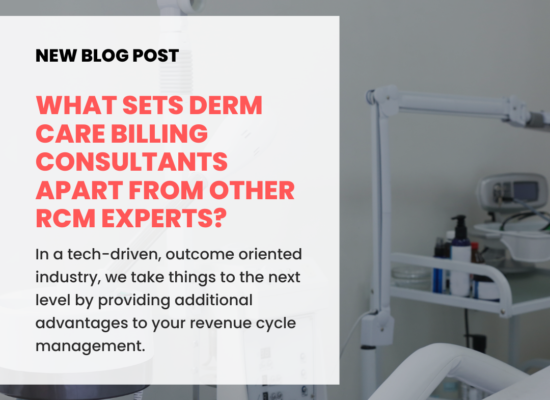What Dermatology Billing KPIs Should You Be Tracking?
Any business – regardless of whether you are selling a product or providing a service – needs to be able to track progress, analyze performance, and make necessary changes to improve its financial health.
A key way to understand how well your business is performing is to use Key Performance Indicators (KPIs), which show you exactly where you are losing money and which areas need improvement.
When it comes to dermatology billing, practices should ideally have an automated billing system that tracks specific KPIs in order to spot red flags and identify opportunities for improvement. These KPIs should be examined both in terms of your practice’s daily activities plus the overall business performance on a weekly and monthly basis.
What Metrics Should Dermatologists Be Tracking?
Here are some of the key areas that dermatology practices should be tracking and analyzing to identify areas that are affecting your profitability:
Bad Debt Rate: This refers to any medical bill that is unpaid. It is inevitable that there will be a few patients who cannot pay their bills because they do not have the financial means. However, you can avoid this and keep your bad debt rate low by double-checking your insurance coverage before providing treatments, offering online payment options, and ensuring patients co-pay prior to getting treated.
Denial Rate: If you have a high denial rate, you will need to examine the billing errors causing the denials and aim to automate your system to avoid incorrect billing codes that lead to claims rejections.
Missed Appointments: It’s a simple problem that affects your bottom line. Missed appointments or frequent cancellations lead to spaces in your practice’s calendar that are not being filled, ultimately reducing income. Your practice can adjust its appointment scheduling procedures to avoid this.
Clean Claims Ratio: Dermatology billing staff should always aim to have a high clean claims ratio, meaning that the claims are accepted and paid the first time they are submitted without requiring any follow-up or refiling. If you have a low clean claims ratio, this could indicate issues with your claims submission process or documentation.
Net Collection and Gross Collection Rate: Your gross collection rate is calculated by dividing your total payments by your total charges. If your rate is high, that shows that your practice is collecting most of its billed charges. The net collection rate, on the other hand, looks at the total payments divided by the total allowable charges, meaning it looks at what available reimbursements your practice should be able to collect. If these two rates are both low, this is a sign that your dermatology billing practices are not up to par.
Monthly revenue: Your practice should analyze your month-over-month revenue to see where you could lose your profits. For example, you can look closely at which tests don’t get reimbursed quickly or which raise the most disputes. This can give you the chance to adjust your billing procedures.
Claim lag time: This refers to the number of days between the treatment of the patient and the claims submission. You want to avoid having many days, as this can lead to missed submission deadlines and, ultimately, a higher denial rate. An automated dermatology billing system can help you avoid having a long lag in your claims.
If your dermatology billing practices show room for improvement, you may want to invest in a professionally automated dermatology billing system from Derm Care Billing Consultants to help you avoid rejected claims and ensure your staff uses the correct billing codes.
By choosing DCBC, you will reduce in-office workloads, decrease errors and claim rejections, and, most importantly, increase cash flow in the long run. You will be able to focus your attention on a higher level of dermatologic patient care.





